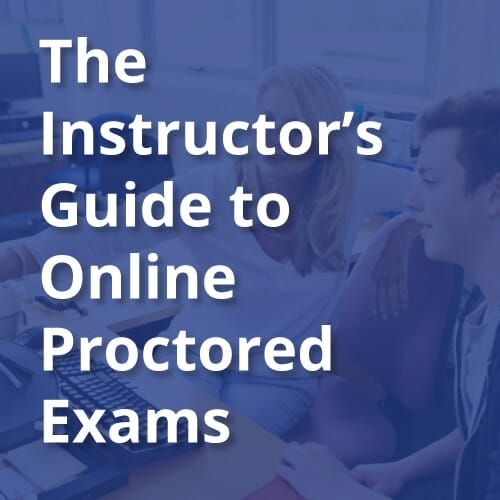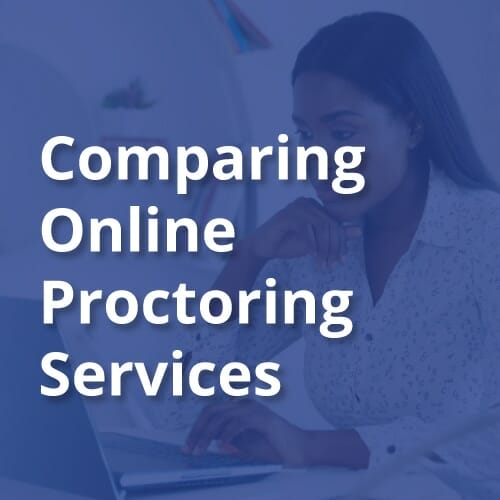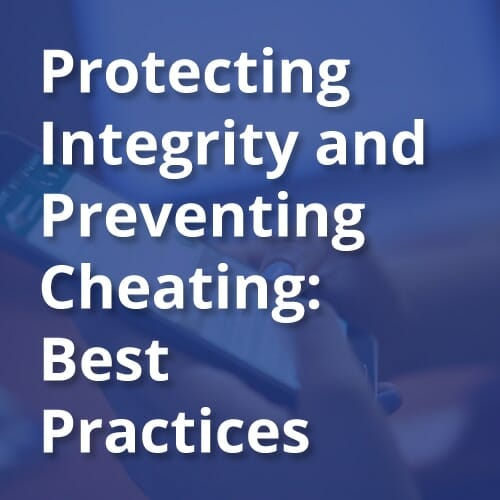In part one, we introduced Six Sigma, which is a set of tools to eliminate defects in production and errors in administration. Six Sigma quickly expanded in many industries thanks to success with manufacturing and technology companies such as Motorola and General Electric.
In part two of this three-part series, we’ll discuss:
- Steps to implementing Six Sigma
- What you need to implement Six Sigma
- How Six Sigma Streamlines the Process of Implementing Technology
implementing technology for online proctoring across an institution.
This example is relevant because many universities and colleges were forced to move their educational programs to an entirely online learning format due to the Covid-19 pandemic in 2020.
With the sudden move to virtual learning, institutions realized that they needed a way to protect the academic integrity of their online exams and they needed it fast.
Luckily, with a streamlined six sigma implementation process, schools were able apply online proctoring technology in as little as two days. Here’s how the Six Sigma DMAIC process can help streamline any technology implementation at your institution.
Steps to Six Sigma Implementation
Applying Six Sigma starts with the addressing problems and helps your team identify the kind of project that will solve or mitigate that problem. Your team should follow the Six Sigma DMAIC process, which stands for Define, Measure, Analyze, Improve, Control.

Let’s look at each phase of the Six Sigma DMAIC process in further detail:
Example: As previously described, one problem that quickly cropped up for many schools in March 2020 was how to quickly transition to a fully online learning format and prevent academic dishonesty on their online exams. Institutions had concerns that cheating would increase in an online exam environment. They knew that in an unproctored testing environment, students could easily search for test questions and answers, refer to their notes, and share exam questions with other students.
Example: the institution defined the problems they face with the transition to a fully online learning environment and the vulnerability of their online exams without online proctoring.
- How many total courses will be online?
- How many of the courses require online proctored exams?
- How many students will be taking proctored online exams?
- What is the average length of time for an online exam?
- How long does it take to review an exam and submit the results?
- How can we integrate online proctoring with our existing LMS?
- What are the pros and cons of our current online exam proctoring system?
Schools will be able to gather the appropriate data in short order, as most of these are common statistics known to the deans of each faculty and the registrar’s offices.
If you already have online proctoring software in place but you’re evaluating a new online proctoring system, gather data on the benefits and the complaints you’ve received from faculty and students about the current system. Then, categorize the number and type of benefits and complaints in order to efficiently review and prioritize.
During the Measurement phase, Dr. Jill Simpson of the University of North Alabama College of Business, held focus groups with faculty and students about their experience with online proctoring systems to determine their needs.
Example: After Dr. Simpson conducted the focus groups, she analyzed the data and identified the root causes of the problems for both faculty and students.
Example: Faculty would test the online proctoring system to address any deficiencies and improvements and then provide feedback based on their experiences.
Example: In this case, the university implements the online proctoring system and creates procedures, strategies, and documentation to ensure ongoing success and use. The institution should continually monitor the effectiveness of the online proctoring system by collecting relevant data such as student performance on the proctored online exams and overall feedback, and make adjustments to adapt to the changing needs.
What Do You Need to Implement Six Sigma?
Streamline Online Proctoring Implementation
Research shows that institutions that successfully implement Six Sigma perform better in virtually every category. With thoughtful concern for the ways in which everyone can do their jobs better and more efficiently, universities can streamline technology onboarding, increase enrollments, improve fundraising, control costs, better engage faculty and staff, and, ultimately, improve students’ learning experience.
Honorlock online proctoring has many similarities with Six Sigma’s methodology because it provides faculty with the ability to define, measure, analyze, improve, and control their proctored online exams.
In the third and final part of this series, we’ll show you that Honorlock online proctoring and Six Sigma have more in common than you think. We’ll show you features and functionality that will define, measure, analyze, improve and control your online exams.
Read Part 1 of this series: What is Six Sigma and how does it apply to higher education?
Read Part 3 of this series: What does online proctoring and Six Sigma have in common?
Sign up below to receive more resources for tips, best practices, white papers, and industry trends
Want to see Honorlock in action? Schedule a demo.
















